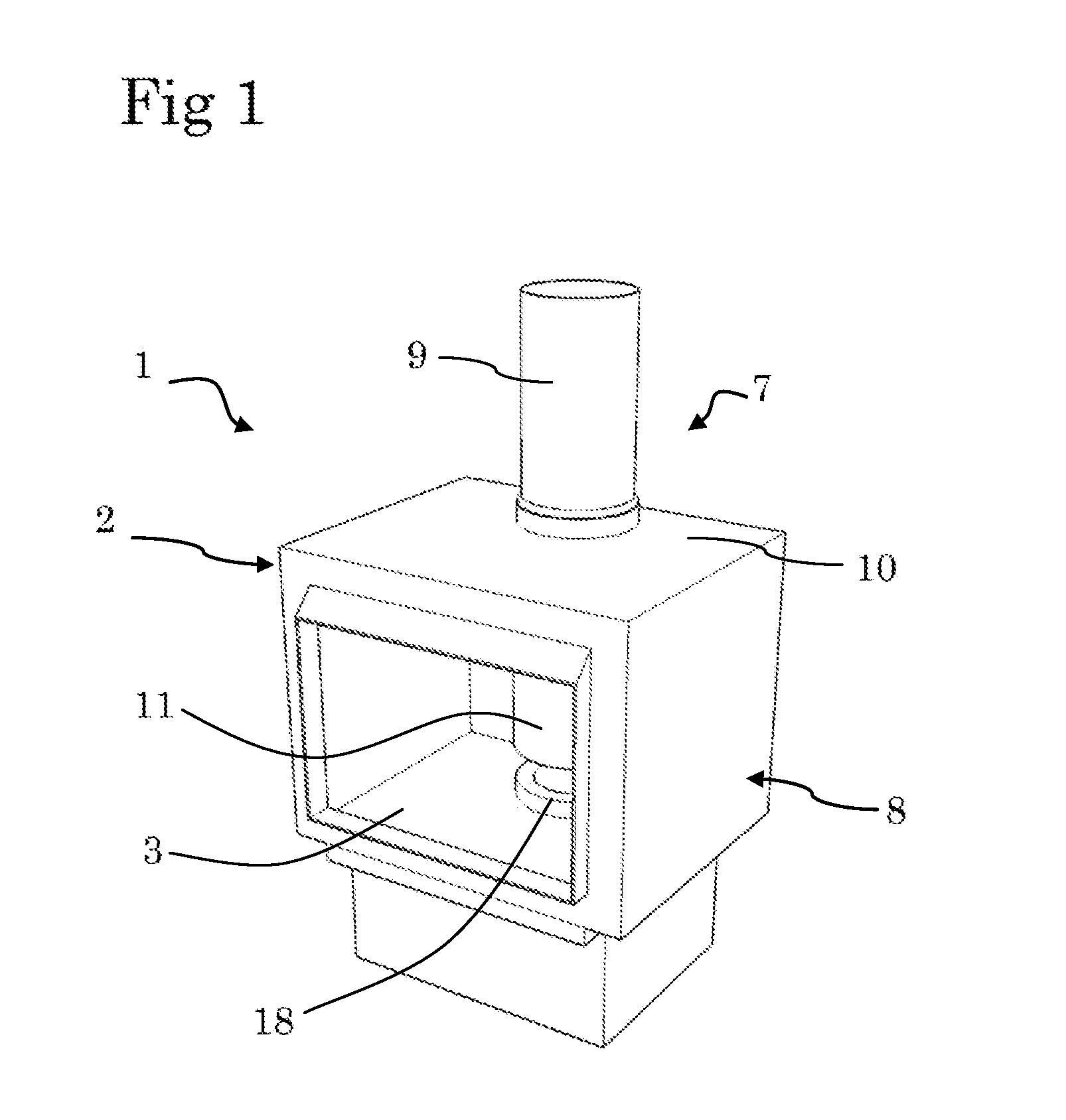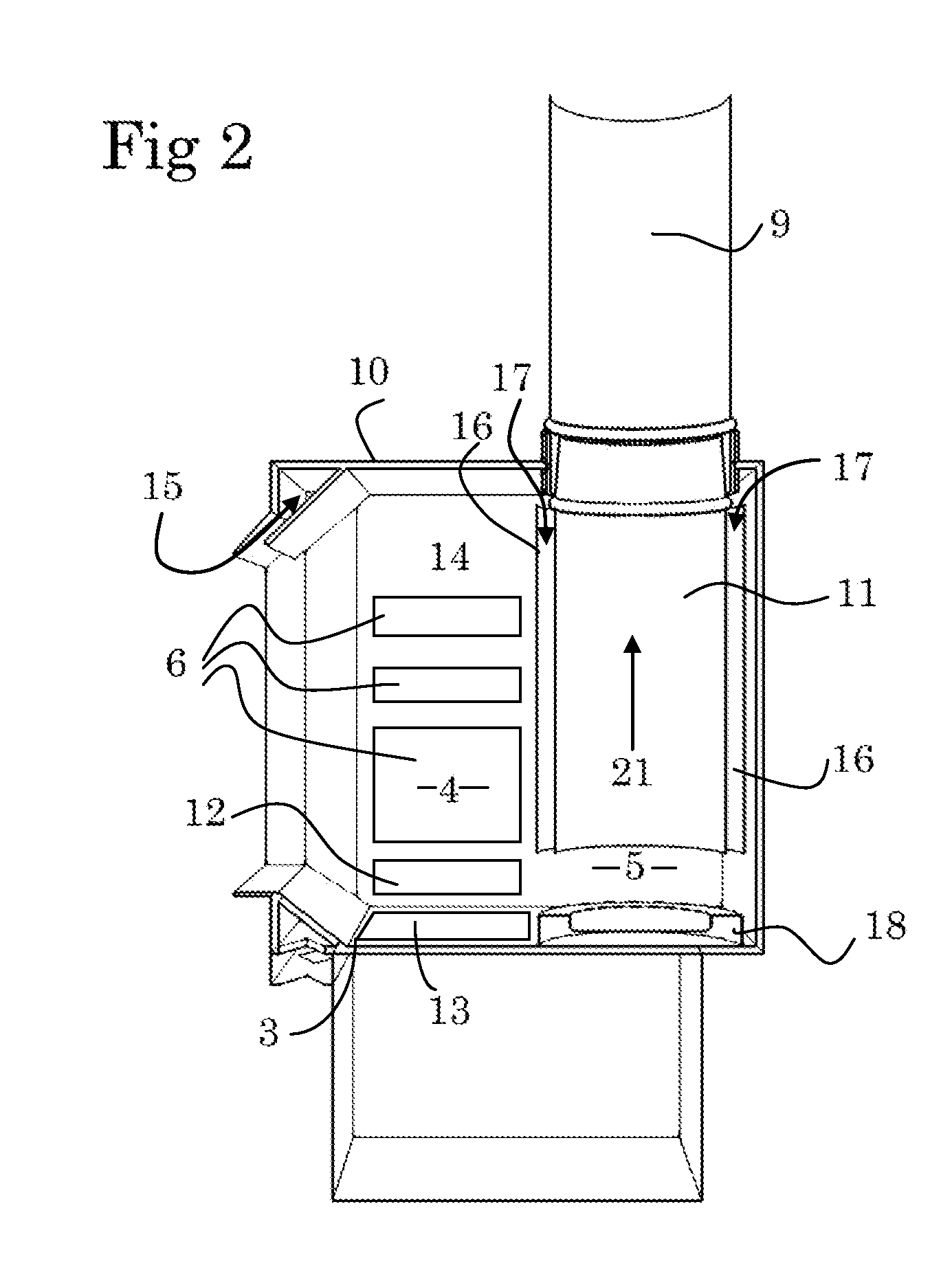A Combustion System
a combustion system and combustion technology, applied in the field of combustion systems, can solve the problems of inefficient combustion of biomass fuel, high cost, and high cost, and achieve the effect of increasing the flame path and increasing the time available to fully burn
- Summary
- Abstract
- Description
- Claims
- Application Information
AI Technical Summary
Benefits of technology
Problems solved by technology
Method used
Image
Examples
Embodiment Construction
[0087]The description of a preferred form of the invention to be provided herein, with reference to the accompanying drawings, is given purely by way of example and is not to be taken in any way as limiting the scope or extent of the invention.
DRAWINGS
[0088]FIG. 1: is a perspective front view of a wood burner which incorporates one possible embodiment of the present invention,
[0089]FIG. 2: is a cut-away side view of the embodiment illustrated in FIG. 1,
[0090]FIG. 3: is a cut-away side perspective view of another possible embodiment of the present invention,
[0091]FIG. 4: is a perspective front view of yet another possible embodiment of the present invention, and
[0092]FIG. 5: is a cut-away side view of the embodiment illustrated in FIG. 4.
DESCRIPTION OF PREFERRED EMBODIMENTS
[0093]Having regard to FIGS. 1 and 2 there is shown a combustion system generally indicated by arrow 1.
[0094]The combustion system 1 includes a fireplace in the form of a wood burner 2.
[0095]The wood burner 2 inclu...
PUM
 Login to View More
Login to View More Abstract
Description
Claims
Application Information
 Login to View More
Login to View More - R&D
- Intellectual Property
- Life Sciences
- Materials
- Tech Scout
- Unparalleled Data Quality
- Higher Quality Content
- 60% Fewer Hallucinations
Browse by: Latest US Patents, China's latest patents, Technical Efficacy Thesaurus, Application Domain, Technology Topic, Popular Technical Reports.
© 2025 PatSnap. All rights reserved.Legal|Privacy policy|Modern Slavery Act Transparency Statement|Sitemap|About US| Contact US: help@patsnap.com



